Table of Contents
1. General Information

|
|
Picture 1:
The Examinee
|
2. Case History
3. Job Information
This data is usually obtained from the referring case manager or directly
from the Examinee's employer. If no job description is available a description is
obtained from the Dictionary of Occupational Titles (DOT).
4. Kinematic Neck Assessment
A computer kinematic assessment is performed for cervical flexion/extension,
lateral flexion and rotation. The Examinee is asked to perform each maneuver 8-10 repetitions
to full range and as quickly as possible. The events are video taped in a precisely
calibrated field for computer analysis. Each event is analyzed for total dynamic
range of motion and peak velocity quantity and quality. Consistency of results
is considered for determining Examinee effort.
After a thorough discussion of expectations, and agreement of understanding by the Examinee,
the Examinee is asked to perform the movement events.

|
|
Picture 2:
Cervical Flexion
|
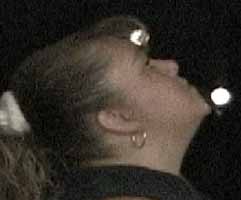
|
|
Picture 3:
Cervical Extension
|
|
Chart 1:
Cervical Flexion/Extension
|
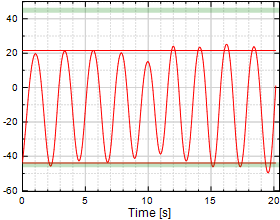
|
|
Table 1:
Cervical Flexion/Extension
[ Help ]
|
|
|
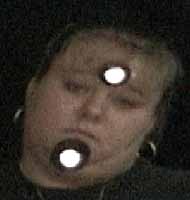
|
|
Picture 4:
Cervical Lateral Flexion - Left
|
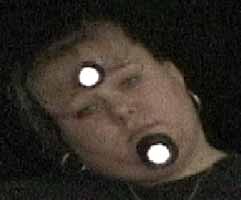
|
|
Picture 5:
Cervical Lateral Flexion - Right
|
|
Chart 2:
Cervical Lateral Flexion
|
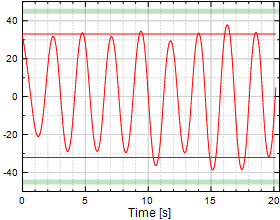
|
|
Table 2:
Cervical Lateral Flexion
[ Help ]
|
|
|

|
|
Picture 6:
Cervical Rotation - Left
|

|
|
Picture 7:
Cervical Rotation - Right
|
|
Chart 3:
Cervical Rotation
|
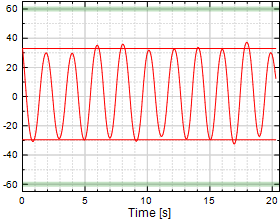
|
|
Table 3:
Cervical Rotation
[ Help ]
|
|
|
- Number of tests where Examinee performed subnormal:
5
of
6
- Number of tests where Examinee performed asymmetrically (one side worse than the other):
2
of
6
- Number of tests where Examinee performed worse on Left Side than on Right Side:
0
of
0
- Number of tests where Examinee performed worse on Right Side than on Left Side:
0
of
0
Significant Findings Kinematic Neck Assessment:
5. Kinematic Shoulder Assessment
A computer kinematic assessment is performed for shoulder flexion/extension,
abduction/adduction, internal and external rotation. The Examinee is asked to
perform each maneuver 8-10 repetitions to full range and as quickly as possible.
The events were video taped in a precisely calibrated field for computer analysis.
Each event is analyzed for total dynamic range of motion and peak velocity quantity
and quality. Consistency of results is considered for
determining Examinee effort. After a thorough discussion of expectations, and
agreement of understanding by the Examinee, the Examinee is asked to perform
the movement events.
Shoulder Flexion/Extension
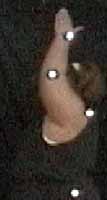
|
|
Picture 8:
LeftShoulder Flexion -
|
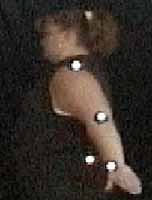
|
|
Picture 9:
LeftShoulder Extension -
|
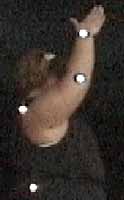
|
|
Picture 10:
RightShoulder Flexion -
|
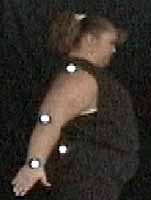
|
|
Picture 11:
RightShoulder Extension -
|
|
Chart 4:
Shoulder Flexion/Extension
|
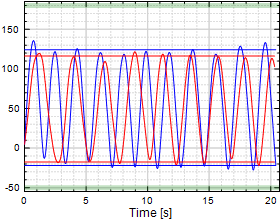
|
|
Table 4:
Shoulder Flexion/Extension (F/E)
[ Help ]
|
|
|
Shoulder Abduction/Adduction
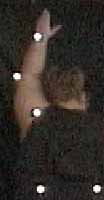
|
|
Picture 12:
LeftShoulder Abduction -
|

|
|
Picture 13:
RightShoulder Abduction -
|
|
Chart 5:
Shoulder Abduction/Adduction
|
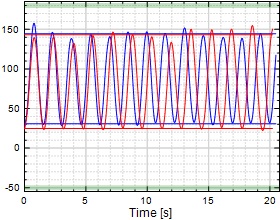
|
|
Table 5:
Shoulder Abduction/Adduction
[ Help ]
|
|
|
Shoulder Internal/External Rotation

|
|
Picture 14:
LeftShoulder Internal Rotation -
|

|
|
Picture 15:
LeftShoulder External Rotation -
|
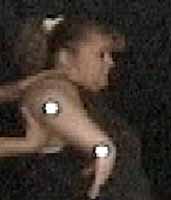
|
|
Picture 16:
RightShoulder Internal Rotation -
|
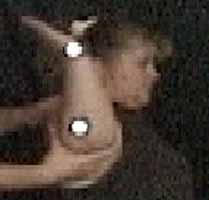
|
|
Picture 17:
RightShoulder External Rotation -
|
|
Chart 6:
Shoulder Internal/External Rotation
|
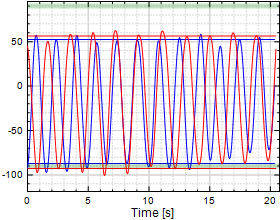
|
|
Table 6:
Shoulder Internal/External Rotation (I/R)
[ Help ]
|
|
|
- Number of tests where Examinee performed subnormal:
10
of
12
- Number of tests where Examinee performed asymmetrically (one side worse than the other):
2
of
12
- Number of tests where Examinee performed worse on Left Side than on Right Side:
1
of
6
- Number of tests where Examinee performed worse on Right Side than on Left Side:
1
of
6
Significant Findings Kinematic Shoulder Assessment:
6. Kinematic Elbow Assessment
A computer kinematic assessment is performed for elbow flexion/extension,
and forearm supination/pronation. The Examinee is asked to perform each maneuver
8-10 repetitions to full range and as quickly as possible. The events are video taped
in a precisely calibrated field for computer analysis. Each event is analyzed for
total dynamic range of motion and peak velocity quantity and quality.
Consistency of results is considered for determining
Examinee effort. After a thorough discussion of expectations, and agreement of
understanding by the Examinee, the Examinee is asked to perform the
movement events.

|
|
Picture 18:
LeftElbow Flexion -
|

|
|
Picture 19:
LeftElbow Extension -
|
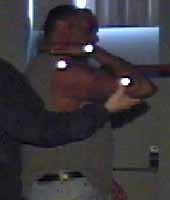
|
|
Picture 20:
RightElbow Flexion -
|
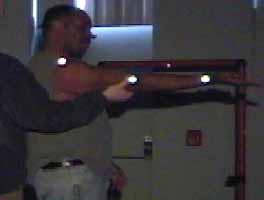
|
|
Picture 21:
RightElbow Extension -
|
|
Chart 7:
Elbow Flexion/Extension
|
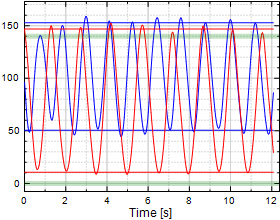
|
|
Table 7:
Elbow Flexion/Extension (F/E)
[ Help ]
|
|
|
- Number of tests where Examinee performed subnormal:
2
of
4
- Number of tests where Examinee performed asymmetrically (one side worse than the other):
2
of
4
- Number of tests where Examinee performed worse on Left Side than on Right Side:
1
of
2
- Number of tests where Examinee performed worse on Right Side than on Left Side:
1
of
2
Significant Findings Kinematic Elbow Assessment:
7. Kinematic Wrist Assessment
A computer kinematic assessment is performed for wrist flexion/extension,
ulnar/radial deviation and supination/pronation. The Examinee is asked to
perform each maneuver 8-10 repetitions to full range and as quickly as possible.
The events are video taped in a precisely calibrated field for computer analysis.
Each event is analyzed for total dynamic range of motion and peak velocity quantity
and quality. Consistency of results is considered for
determining Examinee effort. After a thorough discussion of expectations, and
agreement of understanding by the Examinee, the Examinee is asked to perform
the movement events.
Wrist Flexion/Extension
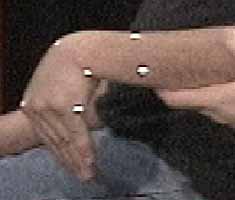
|
|
Picture 22:
LeftWrist Flexion -
|
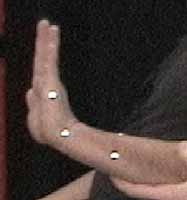
|
|
Picture 23:
LeftWrist Extension -
|
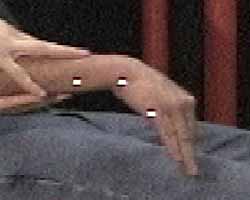
|
|
Picture 24:
RightWrist Flexion -
|

|
|
Picture 25:
RightWrist Extension -
|
|
Chart 8:
Wrist Flexion/Extension
|
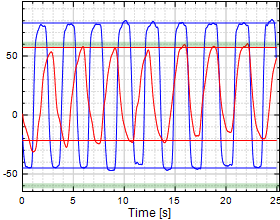
|
|
Table 8:
Wrist Flexion/Extension (F/E)
[ Help ]
|
|
|
Wrist Ulnar/Radial Deviation

|
|
Picture 26:
LeftWrist Ulnar Deviation -
|
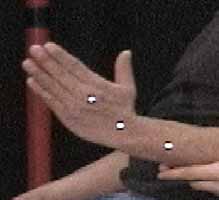
|
|
Picture 27:
LeftWrist Radial Deviation -
|
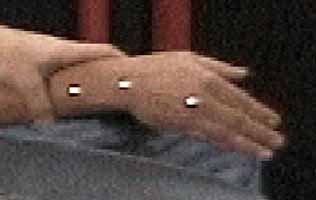
|
|
Picture 28:
RightWrist Ulnar Deviation -
|
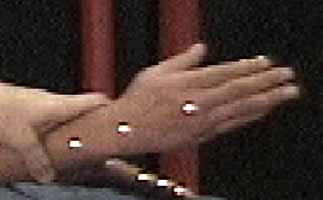
|
|
Picture 29:
RightWrist Radial Deviation -
|
|
Chart 9:
Wrist Ulnar/Radial Deviation
|
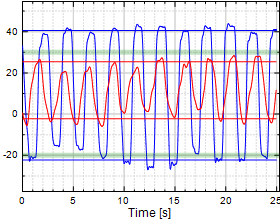
|
|
Table 9:
Wrist Ulnar/Radial Deviation (U/R)
[ Help ]
|
|
|
Forearm Supination/Pronation
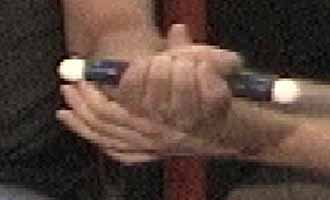
|
|
Picture 30:
LeftForearm Supination -
|

|
|
Picture 31:
RightForearm Supination -
|
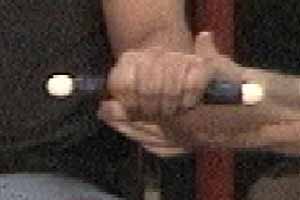
|
|
Picture 32:
LeftForearm Pronation -
|
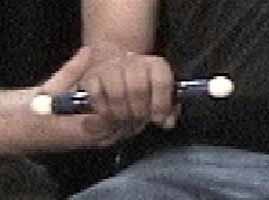
|
|
Picture 33:
RightForearm Pronation -
|
|
Chart 10:
Forearm Supination/Pronation
|
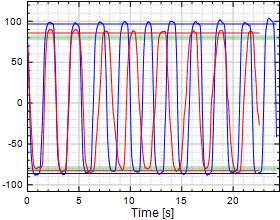
|
|
Table 10:
Forearm Supination/Pronation (S/P)
[ Help ]
|
|
|
- Number of tests where Examinee performed subnormal:
4
of
12
- Number of tests where Examinee performed asymmetrically (one side worse than the other):
6
of
12
- Number of tests where Examinee performed worse on Left Side than on Right Side:
0
of
6
- Number of tests where Examinee performed worse on Right Side than on Left Side:
6
of
6
Significant Findings Kinematic Wrist Assessment:
8. Kinematic Finger Assessment
A computer kinematic assessment is performed for index finger flexion/extension.
The Examinee is asked to perform each maneuver 8-10 repetitions to full range and as quickly as possible.
The events are video taped in a precisely calibrated field for computer analysis.
Each event is analyzed for total dynamic range of motion and peak velocity quantity
and quality. Consistency of results is considered for
determining Examinee effort. After a thorough discussion of expectations, and
agreement of understanding by the Examinee, the Examinee is asked to perform
the movement events.

|
|
Picture 34:
LeftFinger Flexion -
|
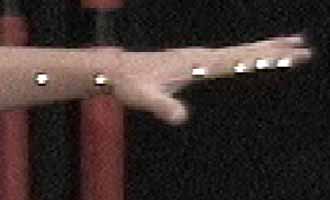
|
|
Picture 35:
LeftFinger Extension -
|
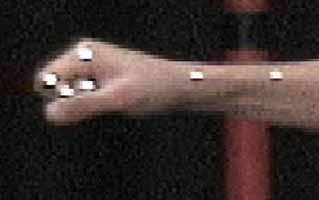
|
|
Picture 36:
RightFinger Flexion -
|
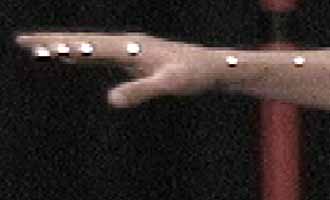
|
|
Picture 37:
RightFinger Extension -
|
|
Chart 11:
Finger MP Flexion/Extension
|
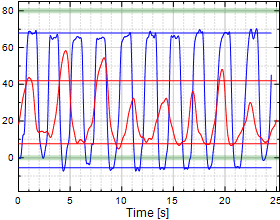
|
|
Table 11:
Finger MP Flexion/Extension (F/E)
[ Help ]
|
|
|
|
Chart 12:
Finger PIP Flexion/Extension
|
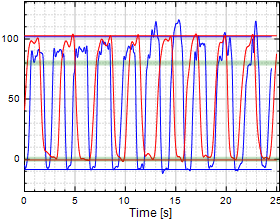
|
|
Table 12:
Finger PIP Flexion/Extension (F/E)
[ Help ]
|
|
|
|
Chart 13:
Finger DIP Flexion/Extension
|
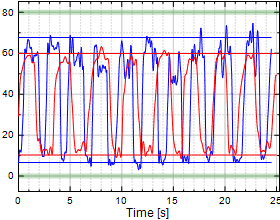
|
|
Table 13:
Finger DIP Flexion/Extension (F/E)
[ Help ]
|
|
|
- Number of tests where Examinee performed subnormal:
7
of
12
- Number of tests where Examinee performed asymmetrically (one side worse than the other):
5
of
12
- Number of tests where Examinee performed worse on Left Side than on Right Side:
0
of
6
- Number of tests where Examinee performed worse on Right Side than on Left Side:
5
of
6
Significant Findings Kinematic Finger Assessment:
9. Thumb Flexion/Extension
A computer kinematic assessment is performed for thumb flexion/extension.
The Examinee is asked to perform each maneuver 8-10 repetitions to full range and as quickly as possible.
The events are video taped in a precisely calibrated field for computer analysis.
Each event is analyzed for total dynamic range of motion and peak velocity quantity
and quality. Consistency of results is considered for
determining Examinee effort. After a thorough discussion of expectations, and
agreement of understanding by the Examinee, the Examinee is asked to perform
the movement events.
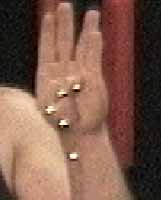
|
|
Picture 38:
LeftThumb Flexion -
|
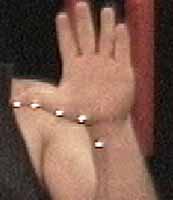
|
|
Picture 39:
LeftThumb Extension -
|
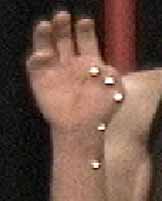
|
|
Picture 40:
RightThumb Flexion -
|
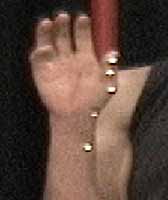
|
|
Picture 41:
RightThumb Extension -
|
|
Chart 14:
Thumb MP Flexion/Extension
|
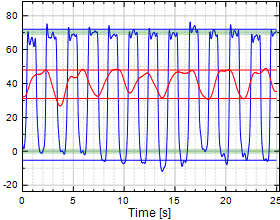
|
|
Table 14:
Thumb MP Flexion/Extension (F/E)
[ Help ]
|
|
|
|
Chart 15:
Thumb IP Flexion/Extension
|
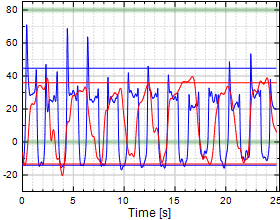
|
|
Table 15:
Thumb IP Flexion/Extension (F/E)
[ Help ]
|
|
|
- Number of tests where Examinee performed subnormal:
4
of
8
- Number of tests where Examinee performed asymmetrically (one side worse than the other):
3
of
8
- Number of tests where Examinee performed worse on Left Side than on Right Side:
0
of
4
- Number of tests where Examinee performed worse on Right Side than on Left Side:
3
of
4
Significant Findings Thumb Flexion/Extension:
- Number of tests where Examinee performed subnormal:
32
of
54
- Number of tests where Examinee performed asymmetrically (one side worse than the other):
20
of
54
- Number of tests where Examinee performed worse on Left Side than on Right Side:
2
of
24
- Number of tests where Examinee performed worse on Right Side than on Left Side:
16
of
24
Significant Findings Ariel Kinematics Functional Capacity Evaluation:
10. Conclusions and Recommendations